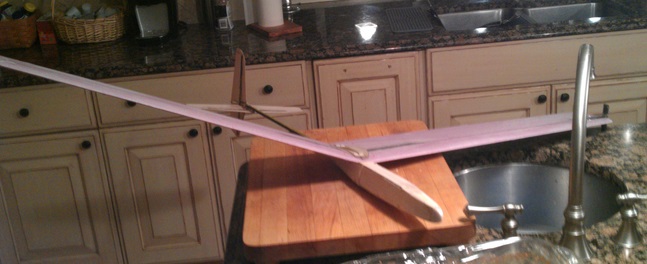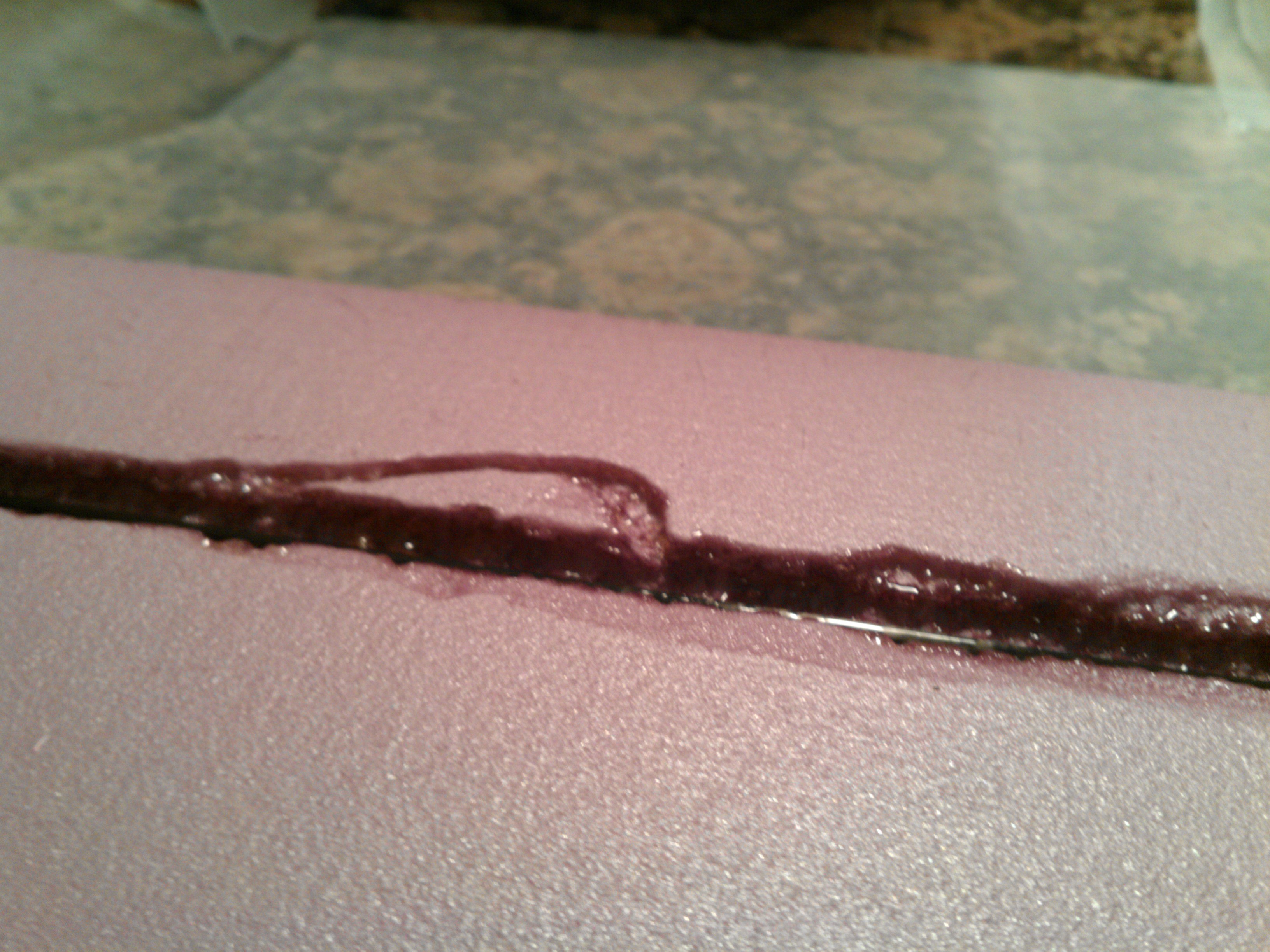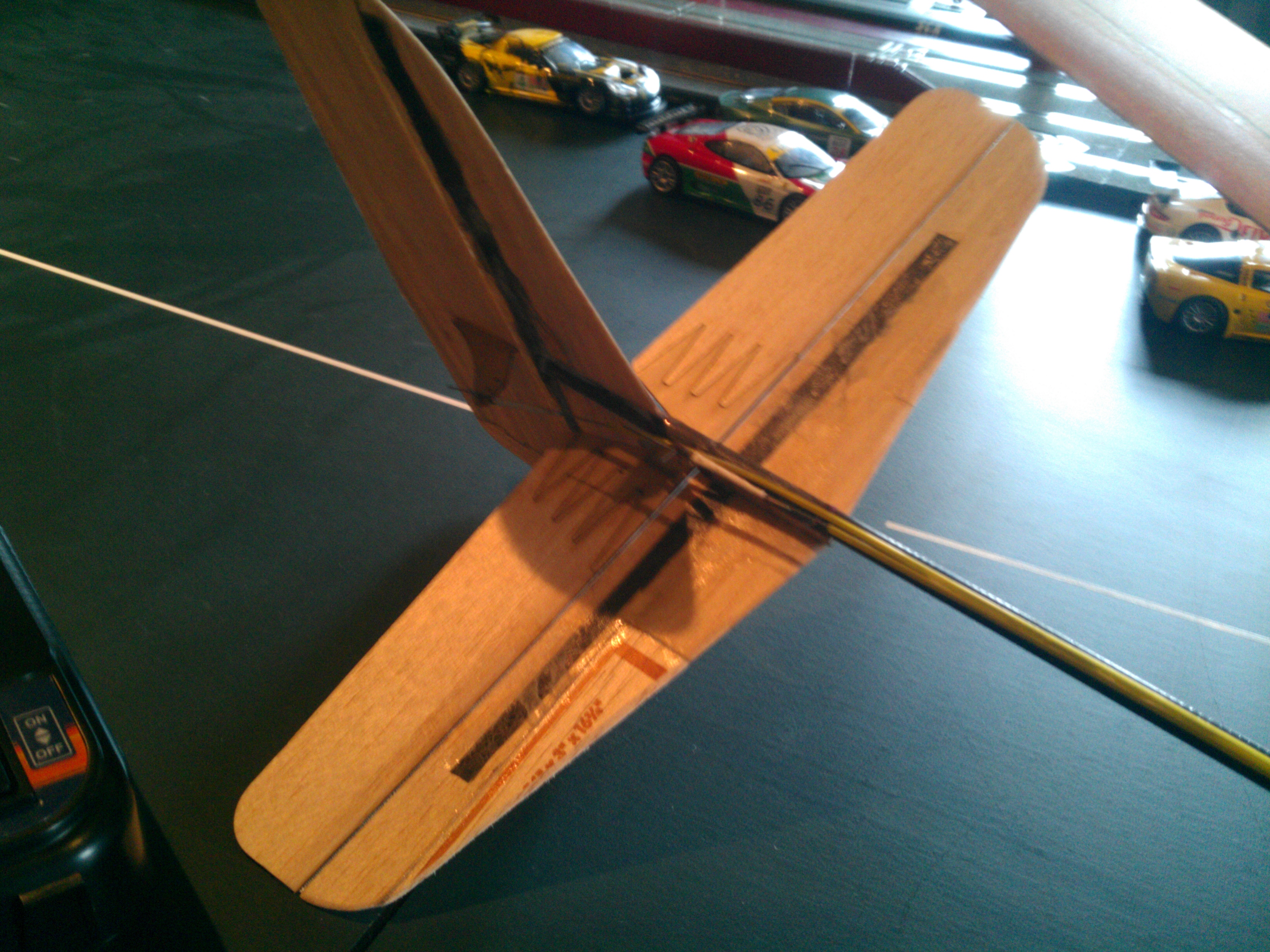Discus Launch Glider
More Gliders 14 Aug 2013
I got this little red glider from Hobby King for Christmas, and it sparked a bit of a mini hobby for me. The glider was a simple rudder elevator glider, which requires only two servos, a radio set /(TX&RX/), and a battery to run. As you can imagine though, this is a very poorly made and designed glider as it only costs about $30 and comes fully assembled. I added the necessary electronics to the pod and started flying. It was somewhat of a nightmare to learn on since it would break after only a few flights every time I took it out. But it got me interested.

I then got this DL-50 as a kit from Mountain Models to really step up my game. The model is discus launch, which means it is spun by a post on the tip of the wing and flung like a discus to launch it. This is awesome since it doesn’t require a giant hi start slingshot to get it going. You simply walk out on the field and chuck it.
The reason I love gliders is because you can fly them forever. Not that the flights last forever, each one is probably less than a minute on average, but you can stay out all day. Even with a tiny battery that takes no time at all to charge, I never had a battery run out on me before my arm got too tired to throw any more.

So when I was building the glider I screwed up a lot. Number one however, was the wing. The wing is a hot wire cut piece of foam that then has carbon fiber spars glued into a slot in it and wrapped in the thinnest fibreglass known to man. I made a boo boo though, since I tried to glue the spars in with a polyester resin. Polyester resin has a nasty habit of dissolving lots of types of foam, and specifically whatever foam this wing was made out of. The carbon spar fell out of the bottom of the wing as the resin slowly ate a groove right through the whole thing.

The DLG has a pretty giant rudder elevator tail combo. I think this is to help stabilize it and straighten it out after the violence of a spinning discus launch. The surfaces are actually made of a combination of basswood and balsa wood, strategically spliced together where extra strength is needed. It also had some carbon reinforcement and the whole thing is wrapped in fibreglass. I accidentally used a bit too much glue on the glass and caused the wood to warp slightly. If I were doing it again I’d be much more careful. The other thing I’d change is the location of the push rod horns. I mistakenly put them both on the same side of the tail boom, which makes them interfere slightly if they’re both pushed to the edge of their range of motion at the same time. The red glider taught me not to put them on the bottom of the control surface, where they’re almost guaranteed to get broken off in a landing.